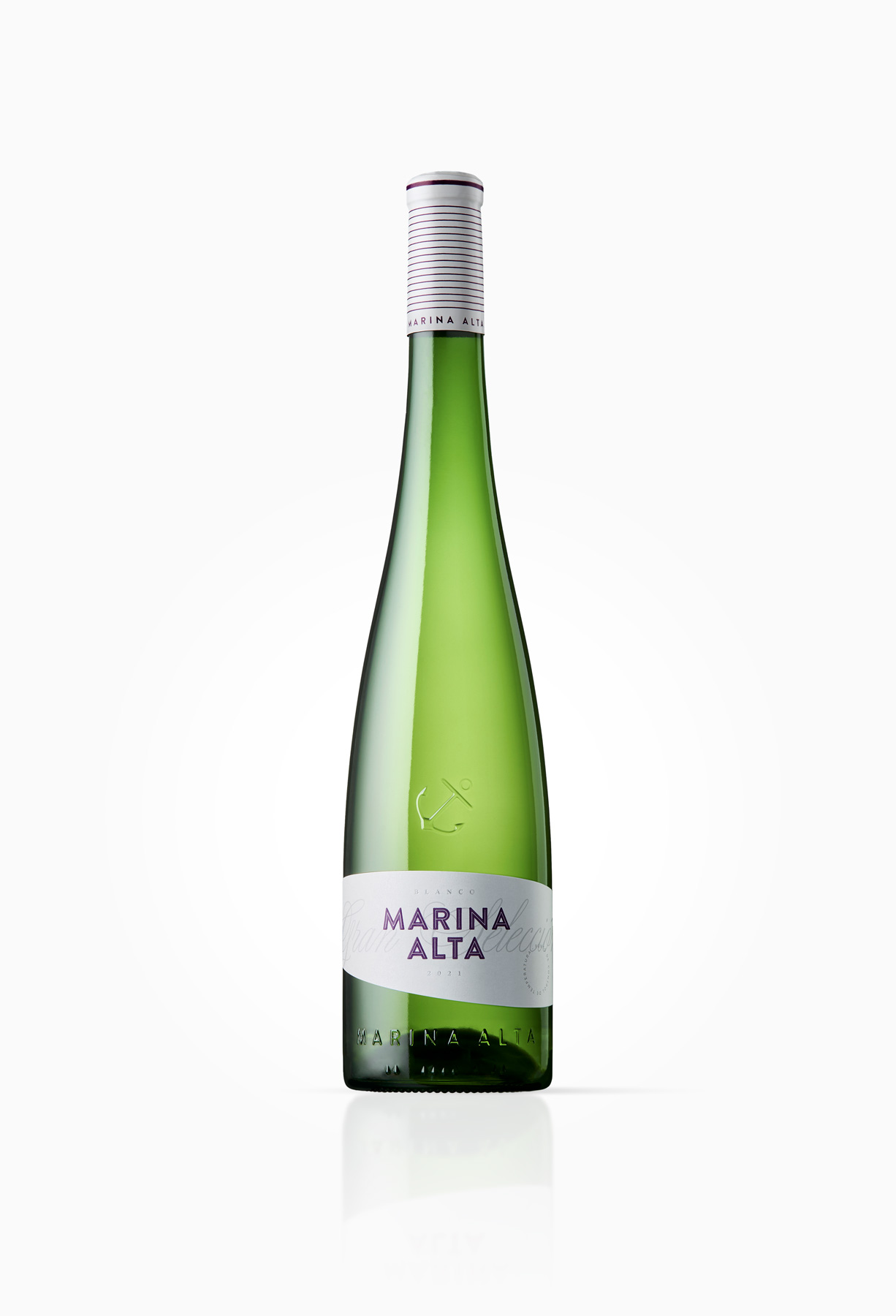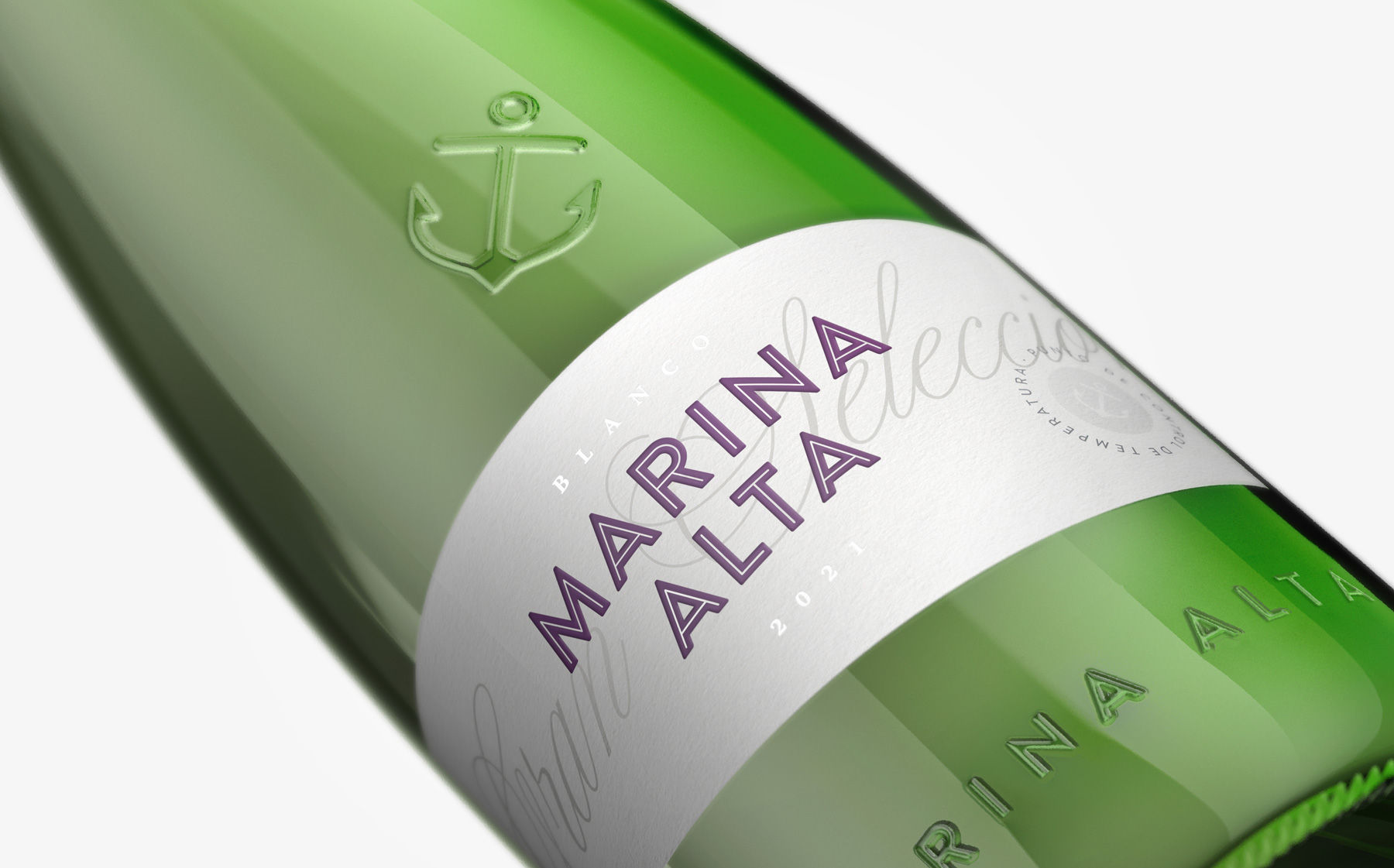Marina Alta
Bottle and graphic for wine. Bodegas Bocopa. 2021
DELTA ADIFAD 2022
Bronze. Packaging
The brief was comprehensive: to design a new bottle and new graphics for Bodegas Bocopa’s best-known and best-selling wine. Accordingly, it had to maintain a certain connection with the previous design. With regard to the bottle, one fundamental requirement was to reduce the weight of the glass to under 600 g (in some countries the wine is exported to, bottles heavier than this are not allowed or are taxed for environmental reasons), and the other was to maintain the height and style of the previous bottle: Rhine-like, narrow (unlike those for Burgundy) and without shoulders (as opposed to those for Bordeaux).
To achieve a lightweight bottle, highly original or disruptive forms must be avoided, since these types of shapes, generally asymmetrical or with irregular surfaces, featuring drawings or engravings on the bottle itself, require a greater amount of glass and make it impossible to reduce the weight (the proposed design weighs less than 540 g). It is in the proportions and the harmonious outlines of the curve and counter-curve forming the transition from the trunk to the neck where the elegance of the bottle’s shape is found, differentiating it from other Rhine-style bottles.
The graphics begin on the capsule with a striped pattern that gives it a nautical feel, then continue with a bas-relief anchor on the glass of the bottle and conclude with a narrow label with curved upper and lower edges, suggesting the sails of a ship or the waves of the sea. A bold and powerful sans-serif typeface counterbalances the soft lines of the bottle and label and makes the brand, which is already very successful in the market, the focus of attention.
DELTA ADIFAD 2022
Bronze. Packaging







